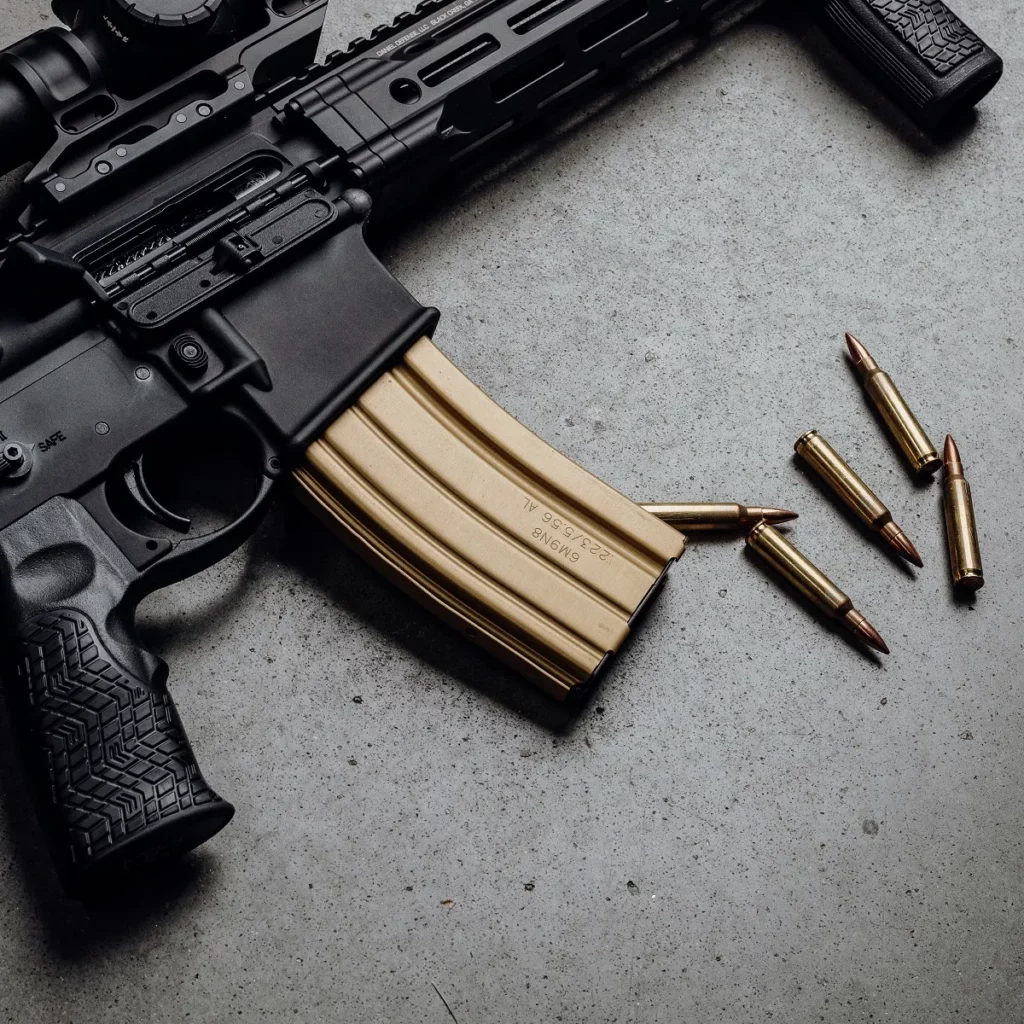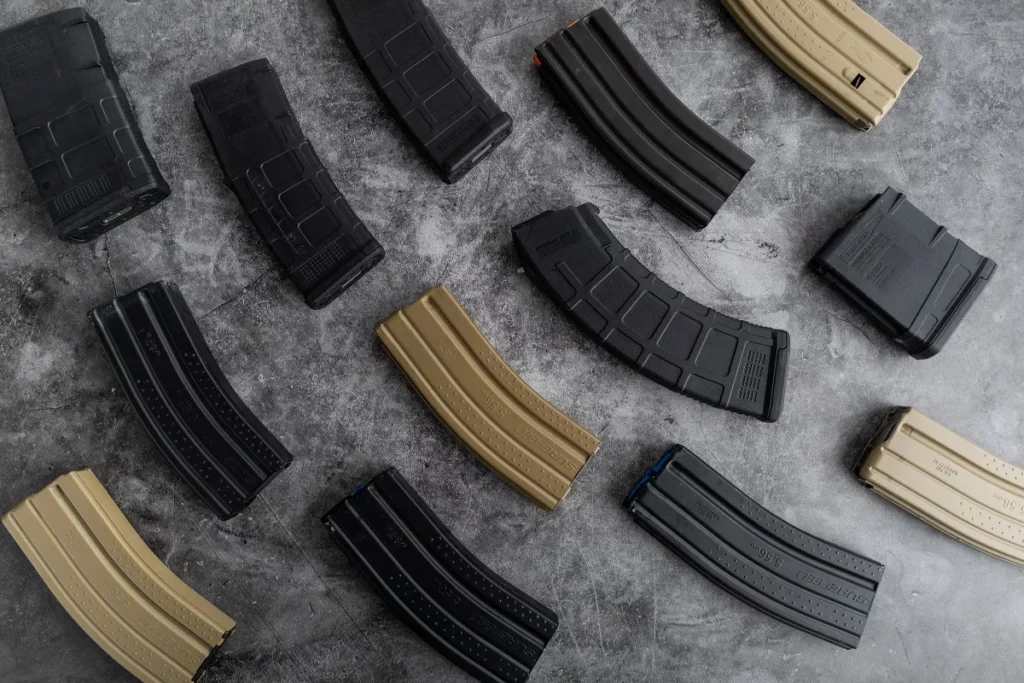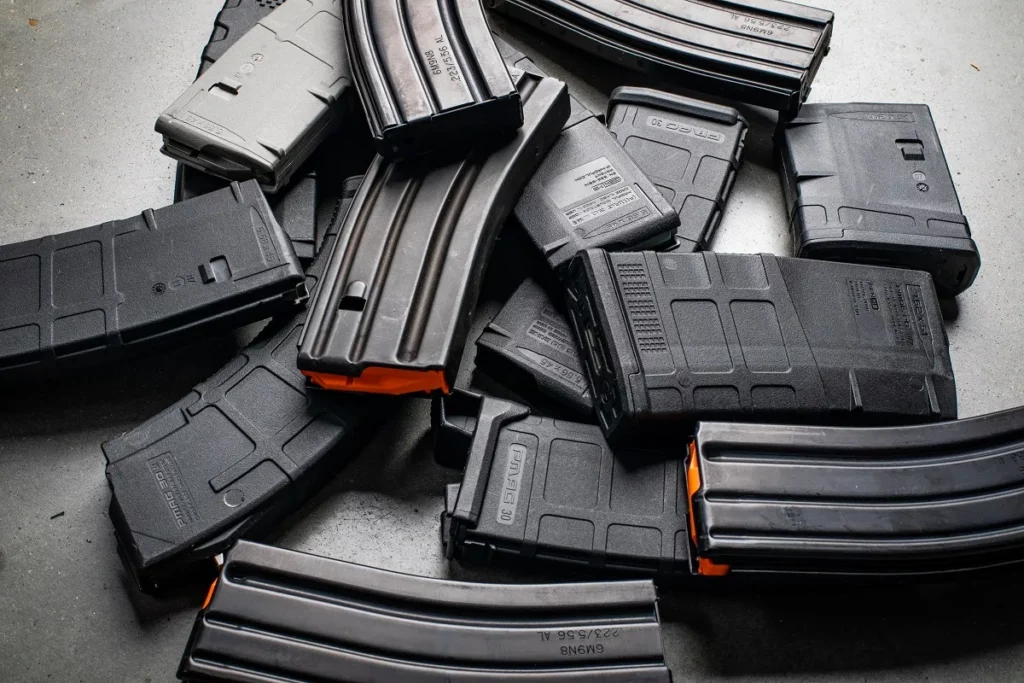A lot of thought goes into purchasing and setting up a firearm. People will spend days agonizing over the right brand, the right caliber. They’ll scour the internet for review after review before purchasing an optic. Even smaller parts like triggers, bolt carrier groups, and barrels get laboriously researched.
Sadly, magazines rarely get this treatment, despite being one of the most crucial parts of a firearm. Magazines matter. No matter how good your rifle is, an unreliable magazine is a recipe for jams, misfeeds, and outright failures.
Good magazines are an investment in your firearm’s reliability. Unlike many other parts, though, your magazine isn’t likely to last for the full lifespan of your rifle. Mags are a consumable good; every time you use them, they wear. Use them enough, and they wear out.
For that reason, it’s important to have more magazines than you need for the task at hand. Even just one set of backup magazines is a good way to ensure you’re never caught unprepared. You wouldn’t wait until you’re completely out of food, water, or toilet paper to buy more—so why do it with magazines?
Below, we’ll take a look at how to select and buy the right magazines for your firearm, the many reasons why you should have spares, and how to best store them for long-term usability.

On Buying Magazines
When it comes to magazines, reliability is key. If your mags can’t feed your firearm reliably, then nothing else matters. Unfortunately, there’s no standard or metric for reliability. You can’t just look for a score or certification on the packaging.
For AR-15 magazines, there are manufacturers with long track records of high-quality products. These include (but are not limited to) Magpul, DURAMAG, Lancer Industries, and Hexmag. They’ve all been around for years and can be counted on to deliver magazines that will never detract from the reliability of your rifle.
There is a multitude of other manufacturers on the market as well. It’s usually prudent to read a few reviews before buying from a less established brand, but can be well worth the effort. You might find magazines every bit as reliable as the major manufacturers at a steal of a price or innovative designs that offer features not yet available from the older brands.
For handguns, the manufacturer’s OEM magazines are usually a safe bet; you can always trust that they will maintain your firearm’s factory performance. However, if you limit yourself to only OEM magazines, you might be leaving some performance on the table, since aftermarket magazines can sometimes match or even exceed OEM reliability and capacity, often at highly competitive prices.
1911 magazines provide arguably the best example of this. The pistol is available from a plethora of different manufacturers, each with its own OEM magazines. But, in many cases, aftermarket magazines from brands like Wilson Combat can significantly boost the reliability of a pistol.
As with AR-15 magazines, in some cases, aftermarket pistol magazines can offer better value or new features compared to OEM models.
Once you’ve ensured you’re buying from a reliable brand, you can consider secondary factors, such as capacity. At first glance, you may assume more is better, and it can be for certain applications. It can also be a hindrance.
For AR-15s, a 30-round capacity is considered standard and is usually the go-to size for most applications. They’ll work with the widest range of aftermarket accessories and mag pouches, and don’t protrude far enough below the gun to often get in the way.
As always, there are exceptions, though. If you plan to benchrest your rifle, whether for target shooting or zeroing an optic, you may find a 30-round magazine to be incompatible with your rest. Similarly, if you want to get as low to the ground as possible when using a bipod, a 30-round magazine will be a hindrance.
For these applications, a 20-round magazine is usually the right option. 20-round magazines typically do not protrude at all below the grip of an AR-15, meaning that they allow the rifle to sit as low as possible to the ground or a benchrest. This can also be convenient when working around barriers or with unorthodox shooting positions where a 30-round magazine may get in the way.
On the other hand, if most of your shooting is done from an upright position, high-capacity magazines like Magpul’s 40-round PMAGs may offer you some additional utility. They’ll protrude a bit further than 30-round mags, making a conventional prone position uncomfortable or impossible, but for many, the increased capacity is worth the cost.
For handguns, capacity is often largely determined by model and availability. OEM extended magazines are becoming more common, though, and typically are as reliable as standard capacity magazines. Unlike rifles, handguns generally need not concern themselves with the ability to go prone or be mounted in a rest, so the only reason to eschew the higher capacity offered by extended mags is concealability or cost.
A higher-capacity magazine will usually stick out from the base of your handgun’s grip, so if you carry your handgun concealed, standard flush-fit capacity is probably your best bet.
After reliability and capacity, the last consideration to be taken into account is features. This is largely a non-issue with handgun magazines—there aren’t usually any extra options to choose from—but with rifle or AR-15 magazines, you may want to consider if you’ll have use for things like labeling schemes, overtravel stops, or round-count indicators.
If you only ever use your mags at the range, round-count indicators and overtravel stops are probably unnecessary. Overtravel stops protect your mags from damage caused by slamming them into the firearm too hard when reloading under stress, which is rarely an issue during casual target practice.
Round-count indicators, while convenient on the range, are most important for competitors or those who may use their firearms defensively. In both instances, the ability to quickly and precisely check your remaining ammo is an advantage, not just a convenience.
Labeling systems aren’t strictly necessary but can be convenient. Any magazine can be labeled with a paint marker, but more organized systems, like Magpul’s dot matrix, create a cleaner aesthetic and can be helpful for those with messy handwriting.

Why You Need Extras
While you don’t necessarily need an entire stockpile of magazines, having extras is always a good idea.
We said it before, but it bears repeating: magazines are a consumable good. Some wear out quickly, and some last for quite a while, but all magazines will fail eventually. Since magazine lifespan can vary considerably, it’s hard to predict when exactly that failure will be, which is one reason why many people who carry a concealed firearm often carry a backup magazine or two as well.
It’s also why it’s worth having extra magazines in your personal inventory. A firearm is just short of useless without a reliable magazine, so it’s a good idea to have some spares around in case one of your primary magazines starts failing.
It’s not uncommon for professional or competitive marksmen to keep multiple sets of magazines for a similar purpose. The more a magazine is used, the more likely failure becomes. To reduce the chances of that failure occurring during a match or defensive firearm use, high-volume shooters often keep one set of magazines for carry or competition use, then a completely different set for practice.
This system offloads the bulk of the wear and tear onto the practice magazines, prolonging the usable lifespan of the carry or competition magazines and reducing their chances of failure. Some users even keep three sets; one for carry, one for practice, and a third for backup if one set starts failing.
How many magazines comprise a set is entirely determined by use case; those who use a rifle in a professional capacity may keep anywhere from 3-7 magazines in their duty loadout and should probably have at least as many practice mags. Some may balk at the expense of buying 14 magazines, but if you use your firearm professionally, it’s a worthwhile endeavor.
For a civilian who carries a concealed firearm for personal defense, on the other hand, a set of mags may be as little as two: one in the firearm, and one spare in a pocket or mag carrier. In that scenario, even having separate sets of magazines for carry, practice, and backup would only comprise 6 total magazines.
As such, only you can determine the precise number of magazines you need, whether it’s four or four hundred.
But, not everyone puts thousands of rounds down range every year. If you have a low-volume firing schedule, you may not feel the need to separate your magazines into various sets. Even then, though, it’s worth having some spares around.
As we’ve seen in recent years, any number of factors can make procuring a replacement magazine difficult. Supply line disruptions, store closures, political changes, and more can make it all but impossible to acquire a new magazine promptly if your current one fails. It’s prudent, then, to keep at least one or two extras on hand before you need them.

How to Store Magazines
Of course, once you’ve assembled your supply of backup magazines, you’ll need to make sure they’re stored properly. Like anything else made of metal, they’re susceptible to rust if left in certain conditions.
To ensure your magazines stay viable and undamaged, limiting their exposure to water and the elements is key. In most cases, storing them indoors in a climate-controlled area is sufficient. If you’re planning on storing your mags in a garage or shed, though, you may want to consider taking extra steps.
A sealed, durable container like an ammo can will help protect your magazines, but make sure you select one with a rubber seal around the lid to lock out moisture. You’ll also want to use a desiccant pack to absorb any moisture that does manage to make it inside the can.
If you expect to be storing your magazines for a long time, a protective coating of gun oil can be applied to any metal parts. Be sure to remove the oil before using the mags, though, as it can act like a magnet for dirt and fouling, reducing your magazines’ reliability.
Whether your store your magazines loaded or not is entirely a matter of personal preference. While the myth that storing magazines loaded will damage the mainsprings is persistent and pervasive, it is unfounded.
Magazines springs are worn out by cycles of compression—that is, the process of being compressed and then uncompressed—which slowly reduces the spring’s strength. Simply loading the mags once and leaving them in that state produces no substantial wear on the spring.
The one exception to this rule is older polymer magazines. While modern high-quality polymer magazines can be stored loaded indefinitely, some older varieties could sustain damage or deformation to the feed lips over time. This is not a concern with metal magazines.

Wrap Up
The importance of magazines is too often overlooked—they’re a huge part of keeping your firearm running smoothly and reliably.
For the best performance from your firearm, it’s important to feed it with high-quality mags. For long-term performance, it’s important to have spares ready to go when your mags finally do fail.
Buying a few extra magazines in advance and storing them properly provides peace of mind, ensuring that when you’re always able to keep your firearms up and running—regardless of market conditions or political landscapes.



